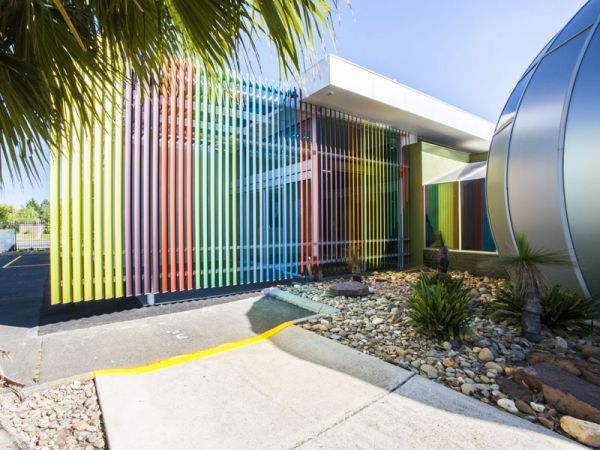Avoiding using colour means missing out on more than just its decorative capabilities.
Colour can have a profound psychological and physiological impact on users of the built environment. Therefore, colour can be used effectively to create more user-supportive environments through the purposeful application of colour.
Strategic use of colour has many benefits. Colour conveys messages of all kinds and performs a wide variety of functions such as setting a tone, conveying a particular style or image, guiding the eye where it needs to go, informing, organizing or warning.
Colour can be used to direct movement through a space. For instance, roll out a red carpet and people will walk along it. Research has shown that people will tend congregate in areas where there is colour in deference to areas where there is a lack of colour. We associate colours with emotions because often it is hard to say what we actually feel. Colours connect to our feelings in a memorable and unique way.
Our nervous system needs stimulation and input. People become bored without a variety of colours and shapes, so colour addresses one of our basic neurological requirements for stimulation.
Colour is a language and we also ‘read’ colour. By this, I mean we scan objects. People are unable to process every object in view or every detail at any given time. Therefore, colour can be used to accentuate or de-emphasise areas, drawing the eye to where it needs to go or where we want it to go.
The eye is first drawn to areas of highest contrast or the lightest colour. An object or building is ‘read’ from lightest to darkest tones or highest contrast to least contrast, with the most impact from the initial part of the reading. Think about how effectively could this be used.
Other strategic uses for exterior colours are to:
- change the perception of a building’s appearance
- bring a building into harmony with its immediate environment
- make a building appear well-proportioned
- create a stimulating or interesting façade
- highlight the desired entry point
- unite and accentuate architectural elements
- create something of beauty
- differentiate or unite a building to neighbouring properties
- add individuality to buildings that are of the same or similar design
In a broader sense, through the use of exterior colour, we also influence the tone of our cities and towns and interact with our surroundings through the cultural and emotional associations of colour.
Therefore, colour should be an integral component of architecture and design and address both functionality and aesthetics. Exterior colours need to be chosen with purpose and have meaning to their use. This will result in both beautiful and user-supportive environments.


